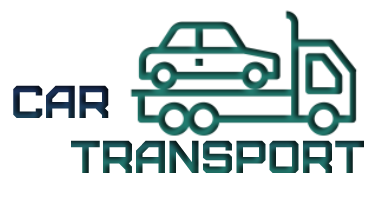Electric vehicles are gaining popularity around the world as more automakers unveil new models each year to cater to the growing demand.
While the domestic sales of EVs within countries are increasing steadily, international trade of these vehicles is still at a nascent stage due to certain technical and logistical hurdles.
This article discusses some opportunities and barriers involved in overseas shipments of electric cars, trucks and buses.
Battery Characteristics
The rechargeable battery is undoubtedly the most important component of any electric vehicle as it provides the energy to power the electric motor. Most EVs currently use lithium-ion batteries that have a higher energy density than other battery technologies, allowing them to store more power in a compact package.
However, lithium-ion batteries are more volatile than conventional lead-acid or nickel-metal hydride batteries commonly found in gasoline vehicles. Their chemical makeup makes them susceptible to damage from excessive heat or changes in air pressure and humidity during long sea or air journeys.
Specialized battery management systems help keep the individual lithium-ion cells in optimal operating conditions. But prolonged exposure to unfavorable environmental conditions during overseas transit could potentially cause performance degradation or safety issues like overheating. This makes international shipping of used or damaged EV batteries quite challenging from a safety and regulatory standpoint.
| Component | Importance |
| Rechargeable Battery | Most important component of electric vehicles, providing energy for the electric motor. |
| Lithium-Ion Batteries | Higher energy density compared to other battery technologies; susceptible to damage from environmental factors. |
| Battery Management System | Helps maintain optimal operating conditions for lithium-ion |
Regulatory Hurdles
Rules governing the cross-border transport of lithium-ion batteries vary widely between countries and regions. The United Nations Recommendations on the Transport of Dangerous Goods provides general guidelines that are adopted in part or full by most regulatory agencies worldwide. However, certain local laws may impose additional packing or documentation requirements that OEMs and shippers must comply with.
For example, battery state of charge limitations during air freight, restrictions on the number of defective cells allowed per consignment, unauthorized shipment of used batteries – all can introduce regulatory red tape in overseas EV deliveries. Harmonizing safety protocols and obtaining the necessary exemptions or approvals from multiple authorities is a bureaucratic challenge. Shipping Electric Vehicles Across Borders
Logistical Considerations
Getting electric vehicles from the factory to dealerships abroad necessitates loading whole vehicles or partial SKDs (Semi Knocked Down kits) onto cargo ships, trains or aircraft. The bulky batteries inevitably increase overall cargo weight and dimensions. This has an impact on packing density, number of vehicles per container, pallet or airplane hold, affecting transport efficiency and economics.
Furthermore, the time taken for intermodal transfer at ports also rises in line with the battery size. Ensuring batteries stay within optimal temperature ranges while waiting for customs clearance or during trans-shipment adds to complexity. Geographically distant or emerging EV markets may see higher delivery costs due to longer transit times and multiple loading-unloading points involved.
Quality Assurance
Prolonged storage or vibration during ocean/rail journeys could potentially lead to faults developing in EV chargers, electric powertrains or battery management software over time. Regular diagnostic testing and maintenance may be impractical at distant service centers lacking proper equipment or technicians skilled in EV technologies.
Therefore, OEMs need to devise comprehensive quality assurance processes to evaluate vehicle condition upon arrival, rectify any issues under warranty and provide post-sales support to uphold brand reputation. Comprehensive drive-away warranties and service contracts may also give importers and customers much-needed peace of mind. Shipping Auto
Holistic Solutions
Though challenges exist, with coherent policy planning and investments in logistics infrastructure, the barriers to global EV trade can gradually be dismantled. Standardization of battery testing methods, transportation procedures jointly agreed by regulatory bodies will build confidence. Manufacturers developing heavy-duty battery enclosures less sensitive to handling or climate could allay safety concerns.
Collaboration between automakers, shipping lines, logistics firms and trade zones to streamline cumbersome documentation processes or set up strategically located battery swapping stations near ports will optimize delivery economics. Most importantly, as EV adoption rates pick up momentum worldwide, there will emerge ample scope for cost reductions driven by economies of scale.
